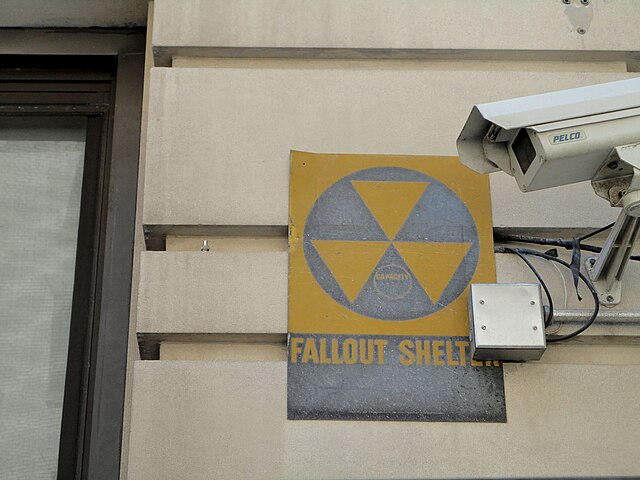A fallout shelter is an enclosed space specially designated to protect occupants from radioactive debris or fallout resulting from a nuclear explosion. Many such shelters were constructed as civil defense measures during the Cold War.
A fallout shelter sign in the United States of America, designed in 1961 by United States Army Corps of Engineers director of administrative logistics support function Robert W. Blakeley
Fallout shelter water storage can: a 66 liters (17+1⁄2 U.S. gal) barrel issued by the U.S. Department of Defense, Office of Civil Defense. 1963
Bosnia's Ark underground facility.
Željava underground military airport
Nuclear fallout is the residual radioactive material propelled into the upper atmosphere following a nuclear blast, so called because it "falls out" of the sky after the explosion and the shock wave has passed. It commonly refers to the radioactive dust and ash created when a nuclear weapon explodes. The amount and spread of fallout is a product of the size of the weapon and the altitude at which it is detonated. Fallout may get entrained with the products of a pyrocumulus cloud and fall as black rain. This radioactive dust, usually consisting of fission products mixed with bystanding atoms that are neutron-activated by exposure, is a form of radioactive contamination.
Comparison of fallout gamma dose and dose rate contours for a 1 Mt fission land surface burst, based on DELFIC calculations. Because of radioactive decay, the dose rate contours contract after fallout has arrived, but dose contours continue to grow.
Fallout shelter sign on a building in New York City
Following the detonation of the first atomic bomb, pre-war steel and post-war steel which is manufactured without atmospheric air, became a valuable commodity for scientists wishing to make extremely precise instruments that detect radioactive emissions, since these two types of steel are the only steels that do not contain trace amounts of fallout.







